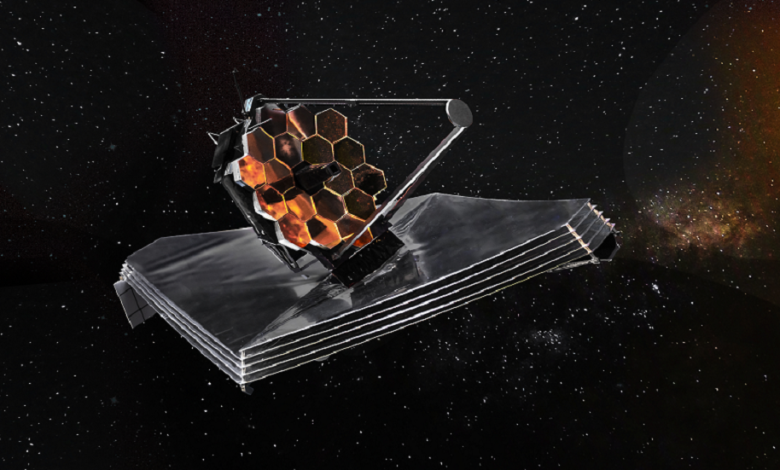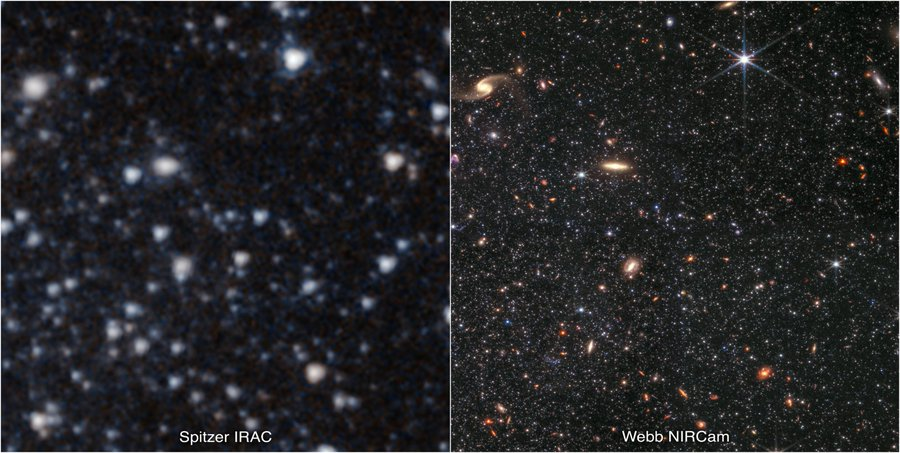James Webb observes a "lonely" galaxy 3 million light-years away from the Milky Way
The James Webb Space Telescope has shared a stunning image of a "lonely" galaxy 3 million light-years from Earth, in never-before-seen detail, showing thousands of ancient stars twinkling within the region.
The dwarf galaxy "Wolf-Lundmark-Milot" (WLM) was seen by the Spitzer Space Telescope in 2016, but its instruments could not capture the details captured by James Webb, and the images showed the stars as blurry.
Using James Webb's powerful mechanics, NASA hopes to reconstruct the star formation history of this galaxy, which it believes formed billions of years ago - not long after the Big Bang.
The image shows James Webb's remarkable ability to detect faint, degenerate stars outside the Milky Way - something that has never been possible until now.
And NASA shared on Twitter that, compared to previous space observatory images, the James Webb NIRCam image makes the whole place shine.
The NIRCM (Near Infrared Camera) is said to be able to detect light from the oldest stars and galaxies.
This observation was made as part of James Webb's Early Release Science (ERS) program, which focused on degenerate populations (a population is a group of stars within a galaxy that are similar to each other in spatial distribution, chemical and mineral composition, and have the same age).
The dwarf galaxy Wolf-Lundmark-Melotte was chosen for this program because its gas is similar to the gas that made up galaxies in the early universe, which means James Webb can differentiate between its individual stars.
The Wolf-Lundmark-Melotte galaxy is located in the vicinity of the Milky Way, but it is ten times smaller than our galaxy.
The galaxy was discovered by Max Wolf in 1909, but its nature was later determined by Knut Lundmark and Philibert-Jacques Millot in 1926.
Although Wolf-Lundmark-Melotte is relatively close to our own Milky Way galaxy, it is fairly isolated and does not interact with other systems, according to Christine McQueen of Rutgers University, one of the principal scientists at Early Release Science.
However, because Wolf-Lundmark-Melotte is isolated and not interacting with the Milky Way, it is a major subject of study.
In a statement to NASA, McEwen indicated that the Wolf-Lundmark-Melot gas is “somewhat rich, chemically speaking, and this is because the galaxy has lost many of these elements through the so-called galactic winds.”
Although Wolf-Lundmark-Melott "has been forming stars recently, throughout cosmic time, and those stars have been making new elements, some material is expelled from the galaxy when massive stars explode."
And supernovae can be powerful and energetic enough to eject material from small, low-mass galaxies like Wolf-Lundmark-Melotte.”
This is why Wolf-Lundmark-Melotte is a subject of study, as astronomers can observe how stars form and develop in small galaxies just as they did when the universe first formed.
We can see countless individual stars with different colours, sizes, temperatures, ages and stages of development.
"It's a really cool picture," McQueen said. Of course, the view is much deeper and better than our eyes can see. And even if you were looking from a planet in the middle of this galaxy, even if you could see infrared light, you would need robotic eyes to be able to see what Webb is seeing.”
The galaxy contains low-mass stars that are believed to have lived for billions of years, meaning that they formed shortly after the Big Bang.
Scientists aim to determine the properties of these low-mass stars, specifically their ages, to gain insight into what was happening in the very distant past.
"We're now looking at near-infrared light with James Webb, and we're using Wolf-Lundmark-Melott as a kind of benchmark (just like you might use it in a lab) to help us make sure we understand James Webb's observations," McQueen explained. We want to make sure that we really and accurately measure the brightness of stars. We also want to make sure we understand our models of stellar evolution in the near infrared."
source:websites




